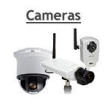
|
|
|
iCatcher Help
Learn how to set up and use iCatcher's features to their full potential. read more... File download areaDownload all the iCatcher software products, including legacy versions. read more... Wildlife picture galleryi-Catcher Wildlife captures fantastic scenes from nature. Have a look at some of the best. read more... Capture equipmentFind out about suitable equipment for use with iCatcher, from cameras to lighting, and more. read more... CCTV ShopWe have an online shop where you can buy video and capture hardware, as well as iCatcher bundles at discounted price. read more... |
Optimising your system for iCatcher iCatcher is designed for use as a webcam, surveillance, or CCTV recording system for any number of cameras, from the simplest single camera home webcam, to systems in excess of 32 cameras. However, when more cameras are added to the system, use of resources such as CPU can increase dramatically. There are certain tweaks to your system that can be made to improve performance and ensure your system runs as smootly as possible.
Graphics card iCatcher is a graphical operation, involving the moving and processing of CCTV images. Because of this Windows will very often opt to complete certain processing operations on your graphics card. For this reason, a high performance graphics card is ideal to ensure these graphics operations are carried out quickly. We have found the best performance is achieved using NVidia graphics cards, particularly if your system has the latest PCI-Express bus for its graphics card operation. Hard Drive When iCatcher runs in its default mode of motion detection recording, a particularly active camera can result in many images per second being recorded to the hard disk. Some hard disks are manufactured to operate in "quiet" modes, which reduce hard drive noise by operating at a slower speed. This is sometimes referred to as "Accoustic management". Some drives will allow you to disable this using a bootable floppy disk utility (Maxtor in particular support this). Ideally a system should make use of a drive designed for performance under intense writing conditions. SCSI drives in particular are good for this, but are often a lot more expensive than their IDE and Serial ATA counterparts. Anti-Virus While Anti-Virus is essential for protecting your system from unwanted virus programs, it also adds a processing overhead to each file read and written. This is most noticable when images are being written to the the disk, but due to the mechanism behind the web view, images can also be read frequently too. This overhead dramatically increases saving time and thus recording performance and frame rate. To keep anti-virus software running while ensuring performance from your iCatcher system, add the iCatcher installation folder to your anti-virus exclusions so that its image files are not scanned. Image Resolution Each image recorded by iCatcher Console (and i-Catcher Sentry in motion detection mode) has to be examined for motion. Because of the two-dimensional nature of an image, this means that an image that is twice the size takes four times longer to process. This increase in processing time applies to almost every processing function, including the decoding of the source image (for network video sources), motion detection, overlay and crosshair drawing, saving to disk, and any resampling require as part of a web view session. You should use a medium resolution (usually around 384x288, 352x288 or 320x240) for almost all cameras. Higher resolutions should only be used where a greater level of detail is absolutely vital. NTFS File Systems The NTFS file system used by Windows 2000, Windows XP, and Windows Server 2003 has enabled by default an option to generated old "DOS Style" filenames, referred to as "8.3 format". These filenames are generated to ensure compatbility with older systems. However, this feature also requires scanning an entire folder of files in order to make sure the generated "8.3" name is unique. On an iCatcher system this feature is mostly unnecessary, and adds an overhead to every file writing operation that is of no benefit to the file system. This feature can be turned off by editing the following registry value: HKEY_LOCAL_MACHINE\SYSTEM\CurrentControlSet\Control\FileSystem\NtfsDisable8dot3NameCreation The value needs to be changed from 0 to 1 to disable the creation of 8.3 filenames. Note that editing the registry is an unsupported operation, and should not be attempted if you are unsure of what you are doing. |
|
|
